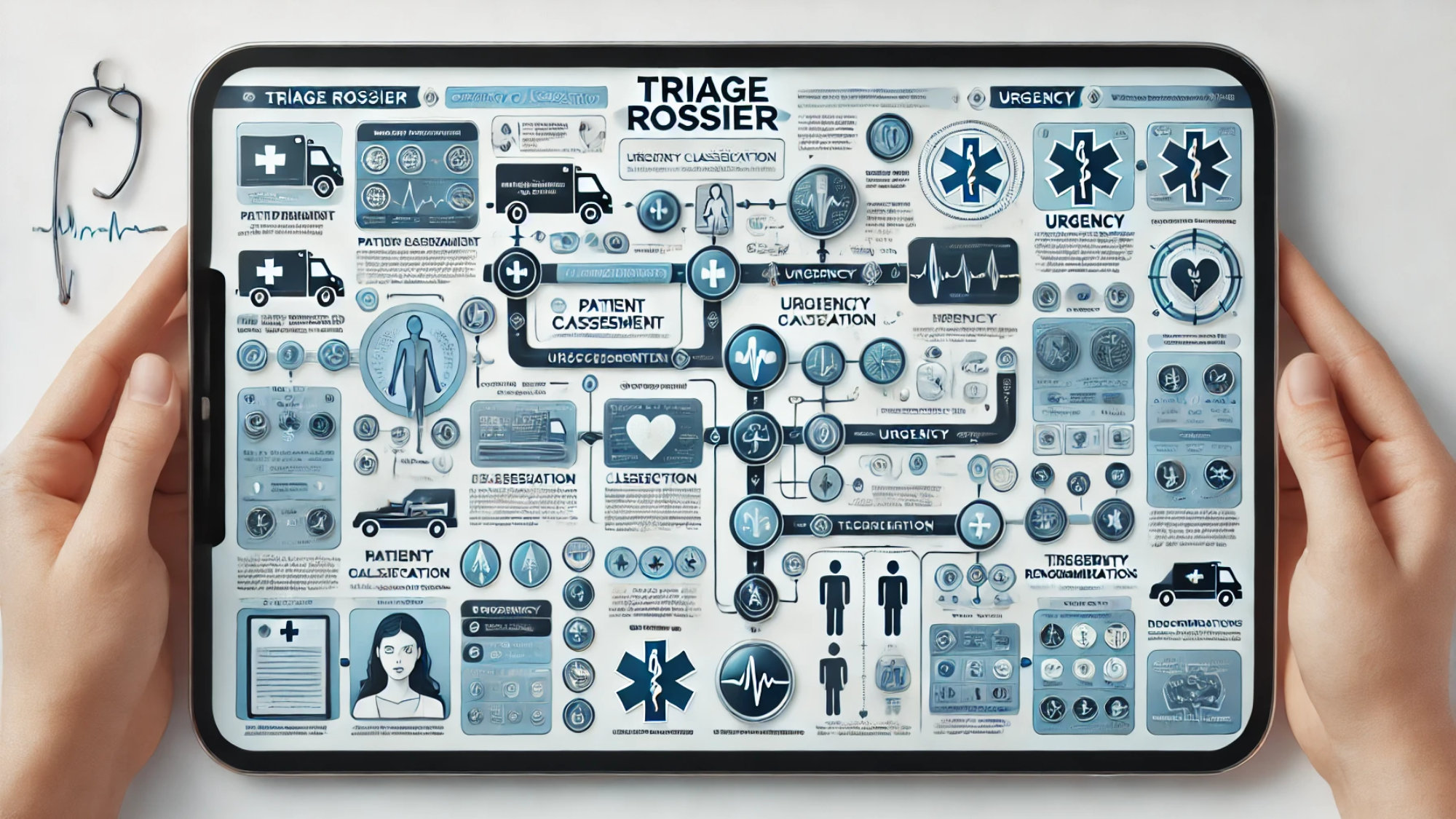Triage in emergency departments (EDs) is crucial for patient care. It ensures patients receive the treatment they need quickly. In busy settings, many patients arrive with different issues. It is essential to sort them based on the seriousness of their conditions. Medical staff use various clinical indicators, such as age, symptoms, and medical history. These indicators help in making important decisions. A well-functioning triage system keeps patients safe. It also helps healthcare providers manage resources effectively. This is critical in a fast-paced environment.
Key Aspects of the Rossier Protocol
The Rossier protocol identifies four main indicators that can signal the onset of sepsis:
- Confusion or Altered Mental State: If someone shows signs of confusion or has a change in their mental clarity, it’s a serious red flag. Neurological tests may uncover underlying complications that need urgent attention.
- Tachypnea: A rapid breathing rate, particularly over 22 breaths per minute, can indicate respiratory distress. This could mean the patient is facing severe sepsis and needs immediate help.
- Hypotension: Low blood pressure (under 100 mmHg systolic) is concerning and can point to septic shock. This requires quick action, such as administering fluids or medications.
- Age: Older individuals are more vulnerable to severe infections and sepsis. That’s why age is a critical factor in the triage process.
How the Triage Process Works with the Rossier Protocol
When patients arrive at the ED, here’s how the triage process unfolds:
- Symptom Assessment: Staff conduct an initial evaluation, looking closely at symptoms and gathering the patient’s medical history.
- Parameter Recording: Each of the four Rossier indicators is documented. If a patient meets two or more of these criteria, they’re categorized as high priority.
- Immediate Intervention: Those identified as high priority are quickly connected with doctors for further evaluation and treatment, which may include blood tests and starting antibiotics.
- Continuous Monitoring: After the initial assessment, patients are monitored closely for any changes in their condition to ensure timely intervention if things worsen.
Benefits of the Rossier Protocol
Using the Rossier protocol has significant benefits for healthcare:
- Quick Identification of Critical Cases: Fast recognition of patients in severe conditions means they get the urgent care they need, reducing risks of complications or death.
- Increased Chances of Survival: Early diagnosis and treatment of sepsis can greatly improve survival rates and help prevent long-term health issues.
- Better Resource Management: This protocol helps hospitals make the best use of their resources, allowing staff to focus on the most serious cases.
- Enhanced Training and Awareness: Implementing this protocol means better training for medical staff, helping them recognize sepsis symptoms and manage emergencies more effectively.
Integrating Triage in Telemedicine with Carepoi
In the context of Carepoi, effective triage is essential for improving patient outcomes in telemedicine. By using digital tools to assess patient symptoms and history before virtual consultations, Carepoi can streamline the triage process, ensuring that high-risk patients are quickly prioritized. This structured approach, similar to the Rossier protocol, allows for timely identification of urgent cases, leading to immediate referrals or early treatment. Not only does this improve efficiency, but it also enhances patient satisfaction, as individuals feel their concerns are being addressed appropriately. Ultimately, integrating effective triage within Carepoi can lead to better health outcomes, especially for those at higher risk of complications.

Training Medical Staff
For the Rossier protocol to be successful, training and awareness among medical staff are crucial. Healthcare professionals need to be well-informed about triage procedures and the protocol’s parameters. Some recommendations for effective training include:
- Workshops and Seminars: Regular educational sessions can help staff recognize sepsis signs and understand how to implement the Rossier protocol effectively.
- Simulations and Scenarios: Creating realistic triage simulations allows staff to practice in high-pressure situations, improving their readiness for real-life emergencies.
- Ongoing Skills Assessment: Routine evaluations and skill checks ensure that staff can apply the protocol effectively and confidently.
Challenges in Implementation
Even though the Rossier protocol has many advantages, some challenges can arise during its implementation:
- Resource Shortages: Many hospitals deal with staffing and resource constraints, which can hinder effective triage.
- Communication and Collaboration: For the protocol to work, teamwork between different hospital departments is essential. Poor communication can slow down patient care.
- Mindset Changes: Implementing new procedures often requires a shift in staff attitudes, which can be a difficult and time-consuming process.
Closing thoughts
The Rossier protocol is a valuable tool for managing patients in emergency departments. It enhances the triage process, allowing for quick and accurate assessments of patients with serious conditions like sepsis, ultimately boosting their chances of survival.
To make the protocol work, training and collaboration among departments are key. Understanding procedures and maintaining good communication among healthcare teams are vital for a quick and efficient response to emergencies. With the right support and preparation, the Rossier protocol can lead to meaningful improvements in healthcare delivery, ensuring that patients receive the timely and appropriate care they need. By implementing this protocol, hospitals can significantly enhance the quality of care and reduce mortality rates in urgent situations.
For further information on effective resource management in triage, please visit Triage in Healthcare: Effective Resource Management.
